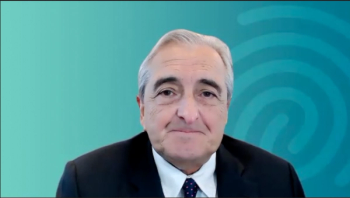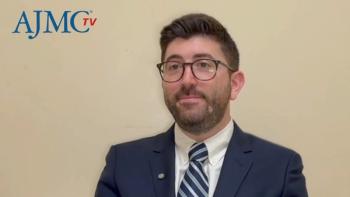
Chronic Skin Conditions in the Classroom and Online: Karen Vo, DO, Urges Unified Support and Awareness
At the 2025 Society for Pediatric Dermatology conference, Karen Vo, DO, presented research analyzing popular TikTok videos about epidermolysis bullosa, highlighting the platform’s power in raising awareness through emotional storytelling, and used her findings to advocate for early school-based mental health support and stronger, more inclusive antibullying policies for children with chronic skin conditions.
At this year’s
Vo also presented a separate poster analyzing the top 50 most-liked TikTok videos about epidermolysis bullosa (EB), which highlighted the platform’s potential for awareness building and community support—but also pointed to gaps in medically accurate content.
This transcript has been lightly edited for content; captions were auto-generated.
Transcript
What are the long-term benefits of early school-based mental health support for kids with chronic skin conditions—especially from a public health or cost-effectiveness standpoint?
That's a really great question. Although I didn't really dive into the cost-effectiveness of this in my poster, I can kind of attest to the importance of early intervention and how that really impacts the long term of our patients' lives dealing with chronic skin conditions and genetic dermatosis. Essentially, we've seen in papers in the past how increased adverse childhood events can have long-lasting impact into adulthood. In our paper, we did see that these patients that have increased bullying and all social ostracization when they're younger have difficulty with self-worth and self-esteem or a higher risk of mental health issues, including anxiety, depression, and even more serious things such as self-harm and suicide ideation. Having earlier interventions to catch these bullying issues, as well as difficulties in mental health, is really important to catch them early on and to prevent more adverse events from happening.
How could your findings help shape local or national policies around antibullying and school-based mental health?
That's an excellent question. I'll start off with the state and federal levels; there isn't really much on the federal level really defining bullying and interventions. There are laws on the state level; however, they're not very uniform, and they don't really explicitly list chronic skin conditions as things that may require IEPs [Individual Education Plans] or 504 plans that can help these students at school. I think one thing that needs to be done is advocacy for state laws to be a little bit more uniform in explicitly stating students with chronic skin conditions that can receive more school help and extra resources, as well as having a more uniform definition of what bullying is. In some states, for example, the definition of cyberbullying varies, so having more of a uniform definition can definitely help.
If you had one message for school leaders or policymakers about the impact stigma related to skin conditions can have on kids, what would it be?
Research has shown that students dealing with skin condition stigma increases the risk of depression, anxiety, adjustment and eating disorders, and even more serious things like self-harm and suicidality. Bullying is linked to school disengagement, academic decline, and higher dropout rates from school, and we want to prevent that from happening. Also into adulthood! These patients may deal with workplace bias and appearance-based discrimination. These have long-term impacts. I also encourage, and kind of in a legislative way, having more of a uniform definition of bullying and including, specifically, patients dealing with chronic skin conditions in IEPs and 504 plans. There are currently some laws on the federal level trying to get passed, including the Stop Bullying Act, which is kind of like a task force to prevent bullying. The one little caveat is that it doesn't really include physicians in that task force, and it's really important to include physicians as well, because we're also dealing with the medical and the psychosocial aspects of these of our patients.
Reference
Vo K, Werpachowski N, Wei D, Min M, et al. Developing school-based mental health interventions and anti-bullying policies for children with chronic and genetic dermatoses. Presented at: Society for Pediatric Dermatology 2025; July 23-26, 2025; Seattle, WA. Poster POS-48.
Newsletter
Stay ahead of policy, cost, and value—subscribe to AJMC for expert insights at the intersection of clinical care and health economics.





























































